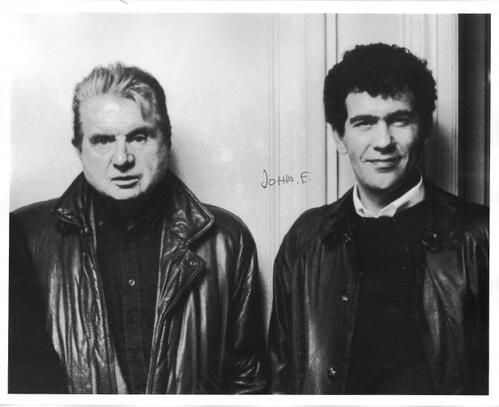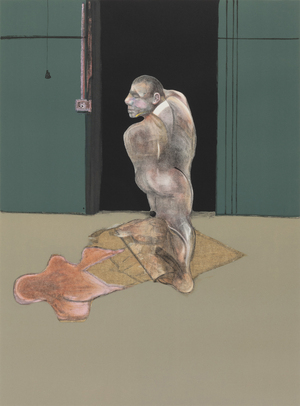Francis Bacon's Last Tango
One of many nights when Francis Bacon, already a revered figure, was going to the Colony club in Soho, he was approached by a young man whose shabby appearance was clearly out of keeping with the select atmosphere of the place, and spat at him, “Who do you think you are, my friend, to order champagne at the Swan and not bother to go and drink it?” The Irish genius, who by then was already in his sixties, was captivated by the audacity and, of course, the beauty of that daring waiter from the East End.
John Edwards would be his last lover but, above all, he would be the one who would take care of him until the end of his life. To him Bacon would bequeath his entire fortune.
Bacon would paint John in numerous canvases over the two decades from the time they met in 1972 until his death.
“Study for a Portrait of John Edwards,” the lithograph being auctioned at Setdart, was based on an oil painting signed in 1986, and is part of a pictorial corpus produced in the 1980s in which Edwards appears either in front of a door or seated in a chair.
In the work under bidding, the figure of his friend, placed in front of a dark threshold, decomposes into shreds of flesh that spiral back and whose shadow silhouetted on the floor acts as a mirror. It is a shadow that seems to open to a second threshold.
Despite the distortion and fragmentation that, faithful to his visceral and expressionist language, Bacon subjects the character, his face remains peaceful, although animalized. Unlike so many other portraits and self-portraits in which the faces are pure incarnate screams, here the countenance conveys a spiritual serenity. In this face that exudes kindness, the painter’s strong bond of friendship and gratitude towards his pupil is encoded.

Apart from subversive reinterpretations of historical figures and ancient paintings, Bacon prioritized his inner circle when choosing models. His work and his life are inseparable and his paintings reveal to a certain extent his emotional state. His stormy life and his genuine rebelliousness were poured on his canvases from his first paintings to his last ones.
Bacon boldly took on the inveterate puritanism of British society. The tragic aftertaste permeates his work. In it, beauty and violence, Eros and Thanatos, passion and torment, flesh and spirit, are laminated without remission. This polarity is expressed in a sublime way in this portrait of his last, and perhaps only (as he himself said), friend.
It is worth noting that, for his collection of graphic works, Bacon selected 35 paintings (including “Study for a Portrait of John Edwards”), and supervised the printing process from start to finish.
This lithograph is referenced in the Catalogue published by Editions Bervillé (2008) of the Alexandre Tacou collection.






